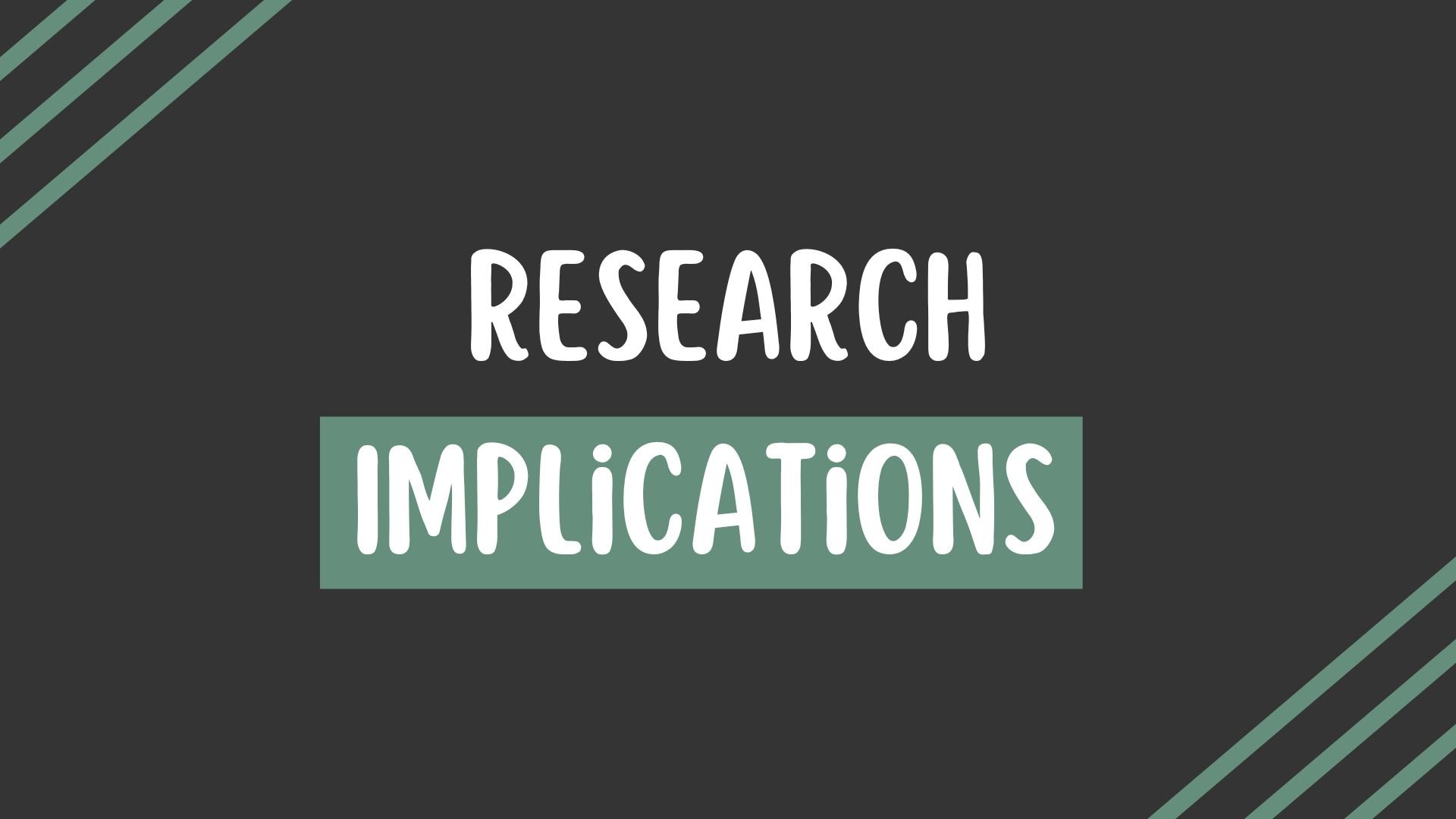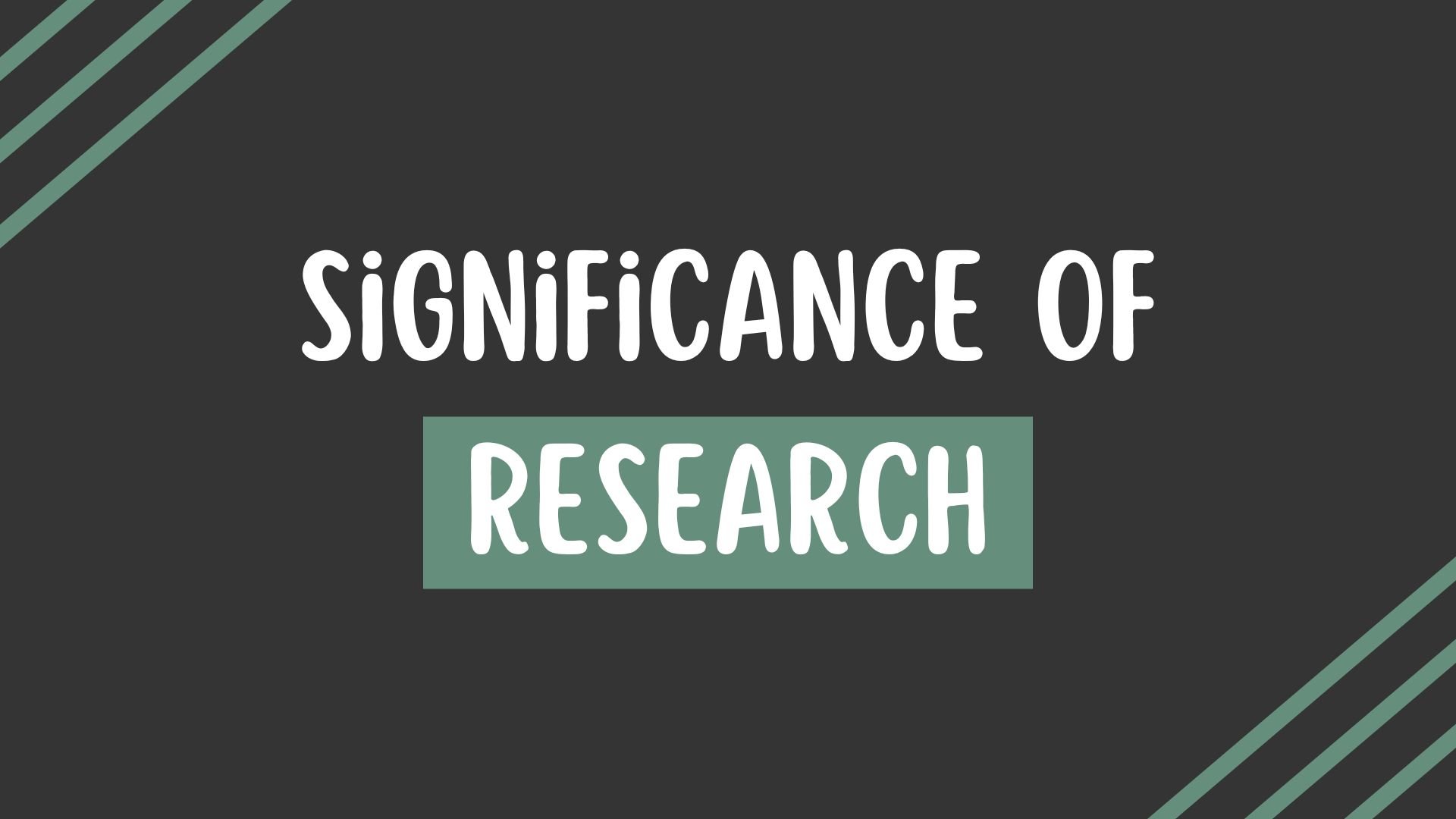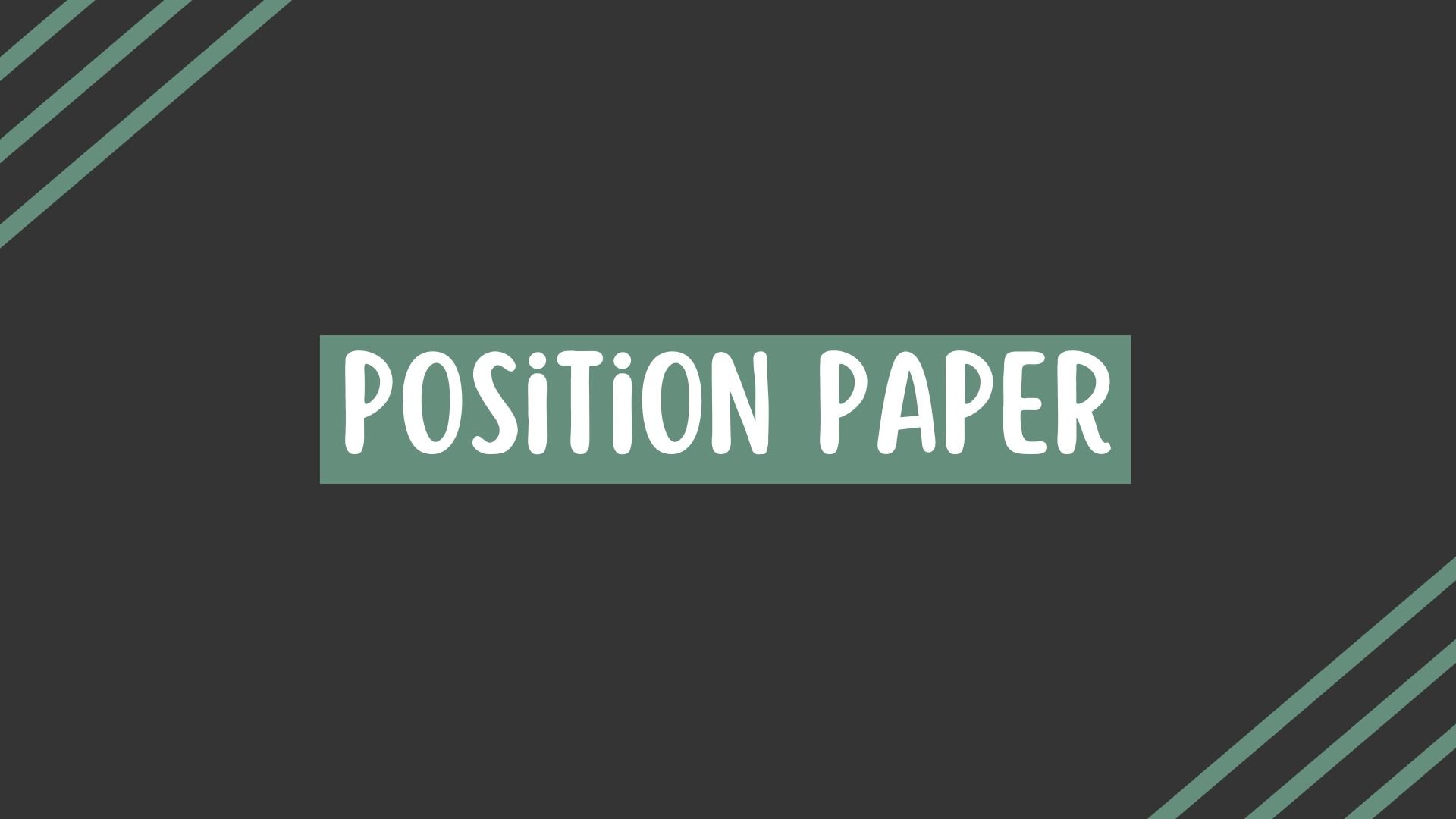- Privacy Policy

Home » Research Report – Example, Writing Guide and Types

Research Report – Example, Writing Guide and Types
Table of Contents

Research Report
Definition:
Research Report is a written document that presents the results of a research project or study, including the research question, methodology, results, and conclusions, in a clear and objective manner.
The purpose of a research report is to communicate the findings of the research to the intended audience, which could be other researchers, stakeholders, or the general public.
Components of Research Report
Components of Research Report are as follows:
Introduction
The introduction sets the stage for the research report and provides a brief overview of the research question or problem being investigated. It should include a clear statement of the purpose of the study and its significance or relevance to the field of research. It may also provide background information or a literature review to help contextualize the research.
Literature Review
The literature review provides a critical analysis and synthesis of the existing research and scholarship relevant to the research question or problem. It should identify the gaps, inconsistencies, and contradictions in the literature and show how the current study addresses these issues. The literature review also establishes the theoretical framework or conceptual model that guides the research.
Methodology
The methodology section describes the research design, methods, and procedures used to collect and analyze data. It should include information on the sample or participants, data collection instruments, data collection procedures, and data analysis techniques. The methodology should be clear and detailed enough to allow other researchers to replicate the study.
The results section presents the findings of the study in a clear and objective manner. It should provide a detailed description of the data and statistics used to answer the research question or test the hypothesis. Tables, graphs, and figures may be included to help visualize the data and illustrate the key findings.
The discussion section interprets the results of the study and explains their significance or relevance to the research question or problem. It should also compare the current findings with those of previous studies and identify the implications for future research or practice. The discussion should be based on the results presented in the previous section and should avoid speculation or unfounded conclusions.
The conclusion summarizes the key findings of the study and restates the main argument or thesis presented in the introduction. It should also provide a brief overview of the contributions of the study to the field of research and the implications for practice or policy.
The references section lists all the sources cited in the research report, following a specific citation style, such as APA or MLA.
The appendices section includes any additional material, such as data tables, figures, or instruments used in the study, that could not be included in the main text due to space limitations.
Types of Research Report
Types of Research Report are as follows:
Thesis is a type of research report. A thesis is a long-form research document that presents the findings and conclusions of an original research study conducted by a student as part of a graduate or postgraduate program. It is typically written by a student pursuing a higher degree, such as a Master’s or Doctoral degree, although it can also be written by researchers or scholars in other fields.
Research Paper
Research paper is a type of research report. A research paper is a document that presents the results of a research study or investigation. Research papers can be written in a variety of fields, including science, social science, humanities, and business. They typically follow a standard format that includes an introduction, literature review, methodology, results, discussion, and conclusion sections.
Technical Report
A technical report is a detailed report that provides information about a specific technical or scientific problem or project. Technical reports are often used in engineering, science, and other technical fields to document research and development work.
Progress Report
A progress report provides an update on the progress of a research project or program over a specific period of time. Progress reports are typically used to communicate the status of a project to stakeholders, funders, or project managers.
Feasibility Report
A feasibility report assesses the feasibility of a proposed project or plan, providing an analysis of the potential risks, benefits, and costs associated with the project. Feasibility reports are often used in business, engineering, and other fields to determine the viability of a project before it is undertaken.
Field Report
A field report documents observations and findings from fieldwork, which is research conducted in the natural environment or setting. Field reports are often used in anthropology, ecology, and other social and natural sciences.
Experimental Report
An experimental report documents the results of a scientific experiment, including the hypothesis, methods, results, and conclusions. Experimental reports are often used in biology, chemistry, and other sciences to communicate the results of laboratory experiments.
Case Study Report
A case study report provides an in-depth analysis of a specific case or situation, often used in psychology, social work, and other fields to document and understand complex cases or phenomena.
Literature Review Report
A literature review report synthesizes and summarizes existing research on a specific topic, providing an overview of the current state of knowledge on the subject. Literature review reports are often used in social sciences, education, and other fields to identify gaps in the literature and guide future research.
Research Report Example
Following is a Research Report Example sample for Students:
Title: The Impact of Social Media on Academic Performance among High School Students
This study aims to investigate the relationship between social media use and academic performance among high school students. The study utilized a quantitative research design, which involved a survey questionnaire administered to a sample of 200 high school students. The findings indicate that there is a negative correlation between social media use and academic performance, suggesting that excessive social media use can lead to poor academic performance among high school students. The results of this study have important implications for educators, parents, and policymakers, as they highlight the need for strategies that can help students balance their social media use and academic responsibilities.
Introduction:
Social media has become an integral part of the lives of high school students. With the widespread use of social media platforms such as Facebook, Twitter, Instagram, and Snapchat, students can connect with friends, share photos and videos, and engage in discussions on a range of topics. While social media offers many benefits, concerns have been raised about its impact on academic performance. Many studies have found a negative correlation between social media use and academic performance among high school students (Kirschner & Karpinski, 2010; Paul, Baker, & Cochran, 2012).
Given the growing importance of social media in the lives of high school students, it is important to investigate its impact on academic performance. This study aims to address this gap by examining the relationship between social media use and academic performance among high school students.
Methodology:
The study utilized a quantitative research design, which involved a survey questionnaire administered to a sample of 200 high school students. The questionnaire was developed based on previous studies and was designed to measure the frequency and duration of social media use, as well as academic performance.
The participants were selected using a convenience sampling technique, and the survey questionnaire was distributed in the classroom during regular school hours. The data collected were analyzed using descriptive statistics and correlation analysis.
The findings indicate that the majority of high school students use social media platforms on a daily basis, with Facebook being the most popular platform. The results also show a negative correlation between social media use and academic performance, suggesting that excessive social media use can lead to poor academic performance among high school students.
Discussion:
The results of this study have important implications for educators, parents, and policymakers. The negative correlation between social media use and academic performance suggests that strategies should be put in place to help students balance their social media use and academic responsibilities. For example, educators could incorporate social media into their teaching strategies to engage students and enhance learning. Parents could limit their children’s social media use and encourage them to prioritize their academic responsibilities. Policymakers could develop guidelines and policies to regulate social media use among high school students.
Conclusion:
In conclusion, this study provides evidence of the negative impact of social media on academic performance among high school students. The findings highlight the need for strategies that can help students balance their social media use and academic responsibilities. Further research is needed to explore the specific mechanisms by which social media use affects academic performance and to develop effective strategies for addressing this issue.
Limitations:
One limitation of this study is the use of convenience sampling, which limits the generalizability of the findings to other populations. Future studies should use random sampling techniques to increase the representativeness of the sample. Another limitation is the use of self-reported measures, which may be subject to social desirability bias. Future studies could use objective measures of social media use and academic performance, such as tracking software and school records.
Implications:
The findings of this study have important implications for educators, parents, and policymakers. Educators could incorporate social media into their teaching strategies to engage students and enhance learning. For example, teachers could use social media platforms to share relevant educational resources and facilitate online discussions. Parents could limit their children’s social media use and encourage them to prioritize their academic responsibilities. They could also engage in open communication with their children to understand their social media use and its impact on their academic performance. Policymakers could develop guidelines and policies to regulate social media use among high school students. For example, schools could implement social media policies that restrict access during class time and encourage responsible use.
References:
- Kirschner, P. A., & Karpinski, A. C. (2010). Facebook® and academic performance. Computers in Human Behavior, 26(6), 1237-1245.
- Paul, J. A., Baker, H. M., & Cochran, J. D. (2012). Effect of online social networking on student academic performance. Journal of the Research Center for Educational Technology, 8(1), 1-19.
- Pantic, I. (2014). Online social networking and mental health. Cyberpsychology, Behavior, and Social Networking, 17(10), 652-657.
- Rosen, L. D., Carrier, L. M., & Cheever, N. A. (2013). Facebook and texting made me do it: Media-induced task-switching while studying. Computers in Human Behavior, 29(3), 948-958.
Note*: Above mention, Example is just a sample for the students’ guide. Do not directly copy and paste as your College or University assignment. Kindly do some research and Write your own.
Applications of Research Report
Research reports have many applications, including:
- Communicating research findings: The primary application of a research report is to communicate the results of a study to other researchers, stakeholders, or the general public. The report serves as a way to share new knowledge, insights, and discoveries with others in the field.
- Informing policy and practice : Research reports can inform policy and practice by providing evidence-based recommendations for decision-makers. For example, a research report on the effectiveness of a new drug could inform regulatory agencies in their decision-making process.
- Supporting further research: Research reports can provide a foundation for further research in a particular area. Other researchers may use the findings and methodology of a report to develop new research questions or to build on existing research.
- Evaluating programs and interventions : Research reports can be used to evaluate the effectiveness of programs and interventions in achieving their intended outcomes. For example, a research report on a new educational program could provide evidence of its impact on student performance.
- Demonstrating impact : Research reports can be used to demonstrate the impact of research funding or to evaluate the success of research projects. By presenting the findings and outcomes of a study, research reports can show the value of research to funders and stakeholders.
- Enhancing professional development : Research reports can be used to enhance professional development by providing a source of information and learning for researchers and practitioners in a particular field. For example, a research report on a new teaching methodology could provide insights and ideas for educators to incorporate into their own practice.
How to write Research Report
Here are some steps you can follow to write a research report:
- Identify the research question: The first step in writing a research report is to identify your research question. This will help you focus your research and organize your findings.
- Conduct research : Once you have identified your research question, you will need to conduct research to gather relevant data and information. This can involve conducting experiments, reviewing literature, or analyzing data.
- Organize your findings: Once you have gathered all of your data, you will need to organize your findings in a way that is clear and understandable. This can involve creating tables, graphs, or charts to illustrate your results.
- Write the report: Once you have organized your findings, you can begin writing the report. Start with an introduction that provides background information and explains the purpose of your research. Next, provide a detailed description of your research methods and findings. Finally, summarize your results and draw conclusions based on your findings.
- Proofread and edit: After you have written your report, be sure to proofread and edit it carefully. Check for grammar and spelling errors, and make sure that your report is well-organized and easy to read.
- Include a reference list: Be sure to include a list of references that you used in your research. This will give credit to your sources and allow readers to further explore the topic if they choose.
- Format your report: Finally, format your report according to the guidelines provided by your instructor or organization. This may include formatting requirements for headings, margins, fonts, and spacing.
Purpose of Research Report
The purpose of a research report is to communicate the results of a research study to a specific audience, such as peers in the same field, stakeholders, or the general public. The report provides a detailed description of the research methods, findings, and conclusions.
Some common purposes of a research report include:
- Sharing knowledge: A research report allows researchers to share their findings and knowledge with others in their field. This helps to advance the field and improve the understanding of a particular topic.
- Identifying trends: A research report can identify trends and patterns in data, which can help guide future research and inform decision-making.
- Addressing problems: A research report can provide insights into problems or issues and suggest solutions or recommendations for addressing them.
- Evaluating programs or interventions : A research report can evaluate the effectiveness of programs or interventions, which can inform decision-making about whether to continue, modify, or discontinue them.
- Meeting regulatory requirements: In some fields, research reports are required to meet regulatory requirements, such as in the case of drug trials or environmental impact studies.
When to Write Research Report
A research report should be written after completing the research study. This includes collecting data, analyzing the results, and drawing conclusions based on the findings. Once the research is complete, the report should be written in a timely manner while the information is still fresh in the researcher’s mind.
In academic settings, research reports are often required as part of coursework or as part of a thesis or dissertation. In this case, the report should be written according to the guidelines provided by the instructor or institution.
In other settings, such as in industry or government, research reports may be required to inform decision-making or to comply with regulatory requirements. In these cases, the report should be written as soon as possible after the research is completed in order to inform decision-making in a timely manner.
Overall, the timing of when to write a research report depends on the purpose of the research, the expectations of the audience, and any regulatory requirements that need to be met. However, it is important to complete the report in a timely manner while the information is still fresh in the researcher’s mind.
Characteristics of Research Report
There are several characteristics of a research report that distinguish it from other types of writing. These characteristics include:
- Objective: A research report should be written in an objective and unbiased manner. It should present the facts and findings of the research study without any personal opinions or biases.
- Systematic: A research report should be written in a systematic manner. It should follow a clear and logical structure, and the information should be presented in a way that is easy to understand and follow.
- Detailed: A research report should be detailed and comprehensive. It should provide a thorough description of the research methods, results, and conclusions.
- Accurate : A research report should be accurate and based on sound research methods. The findings and conclusions should be supported by data and evidence.
- Organized: A research report should be well-organized. It should include headings and subheadings to help the reader navigate the report and understand the main points.
- Clear and concise: A research report should be written in clear and concise language. The information should be presented in a way that is easy to understand, and unnecessary jargon should be avoided.
- Citations and references: A research report should include citations and references to support the findings and conclusions. This helps to give credit to other researchers and to provide readers with the opportunity to further explore the topic.
Advantages of Research Report
Research reports have several advantages, including:
- Communicating research findings: Research reports allow researchers to communicate their findings to a wider audience, including other researchers, stakeholders, and the general public. This helps to disseminate knowledge and advance the understanding of a particular topic.
- Providing evidence for decision-making : Research reports can provide evidence to inform decision-making, such as in the case of policy-making, program planning, or product development. The findings and conclusions can help guide decisions and improve outcomes.
- Supporting further research: Research reports can provide a foundation for further research on a particular topic. Other researchers can build on the findings and conclusions of the report, which can lead to further discoveries and advancements in the field.
- Demonstrating expertise: Research reports can demonstrate the expertise of the researchers and their ability to conduct rigorous and high-quality research. This can be important for securing funding, promotions, and other professional opportunities.
- Meeting regulatory requirements: In some fields, research reports are required to meet regulatory requirements, such as in the case of drug trials or environmental impact studies. Producing a high-quality research report can help ensure compliance with these requirements.
Limitations of Research Report
Despite their advantages, research reports also have some limitations, including:
- Time-consuming: Conducting research and writing a report can be a time-consuming process, particularly for large-scale studies. This can limit the frequency and speed of producing research reports.
- Expensive: Conducting research and producing a report can be expensive, particularly for studies that require specialized equipment, personnel, or data. This can limit the scope and feasibility of some research studies.
- Limited generalizability: Research studies often focus on a specific population or context, which can limit the generalizability of the findings to other populations or contexts.
- Potential bias : Researchers may have biases or conflicts of interest that can influence the findings and conclusions of the research study. Additionally, participants may also have biases or may not be representative of the larger population, which can limit the validity and reliability of the findings.
- Accessibility: Research reports may be written in technical or academic language, which can limit their accessibility to a wider audience. Additionally, some research may be behind paywalls or require specialized access, which can limit the ability of others to read and use the findings.
About the author
Muhammad Hassan
Researcher, Academic Writer, Web developer
You may also like

Data Interpretation – Process, Methods and...

Problem Statement – Writing Guide, Examples and...

Scope of the Research – Writing Guide and...


Context of the Study – Writing Guide and Examples

Research Findings – Types Examples and Writing...

Ethical Considerations – Types, Examples and...

Research Findings Guide: Examples, Types, and Structuring Tips
- November 7, 2024
Dr. Marvin L. Smith
Research findings are the core insights derived from a study, summarizing key results and answering the research question . They reveal patterns, relationships, or trends, whether through qualitative insights or quantitative data.
Understanding how to write findings in research is crucial—it provides clarity, supports claims, and often determines the study’s impact.
This article explores types of research findings , examples, and methods to present them effectively.
Whether you’re looking to learn about research findings, explore examples of different types of research findings, or need guidance on structuring findings in a paper, this guide has you covered.
What Are Research Findings?
Research findings are the key results or discoveries from a study.
They directly address the research question, revealing insights that support or challenge the hypothesis. These findings can be qualitative, like observations or themes, or quantitative, like statistics or patterns.
Clear and accurate findings ensure readers understand the study’s outcome.
Importance of Research Findings
Research findings are the cornerstone of any study, offering critical evidence to support the researcher’s conclusions . They serve as the basis for establishing facts, verifying hypotheses, and validating the study’s objectives.
Findings not only demonstrate that a study has met its intended goals but also underscore its relevance and reliability within a field.
In academic and professional circles, strong research findings enhance the credibility of a paper. They demonstrate that the study is grounded in rigorous data analysis, increasing the likelihood of acceptance by peers and recognition in the wider community.
When findings are presented clearly and backed by sound evidence, they provide a solid foundation for future research, inspiring new questions and guiding subsequent studies.
Additionally, well-structured findings are invaluable for decision-making across sectors.
In healthcare , they inform treatment protocols and health policies; in business , they shape product development and strategic planning; in education , they enhance teaching methods and learning outcomes.
Without concrete findings, research would lack direction and impact, making these insights essential for applying knowledge to real-world problems and advancing knowledge in meaningful ways.
Types of Research Findings
Research findings can be categorized based on both the data’s nature and its origin, giving readers insight into the study’s methods and the type of evidence presented.
This classification—into qualitative vs. quantitative findings and primary vs. secondary findings—helps researchers structure their findings more effectively and ensures readers can follow the study’s approach.
Qualitative vs. Quantitative Findings
Qualitative findings focus on understanding experiences, motivations, and perceptions by capturing themes, patterns, and meanings through methods like interviews, focus groups, and observations. They address the “how” and “why” behind phenomena.
For instance, in a study exploring customer satisfaction, qualitative findings might reveal that customers feel valued when employees remember their names—an insight drawn from direct interview responses.
These findings provide rich, contextual insights that add depth and human perspectives.
Quantitative findings , on the other hand, are based on numerical data derived from methods like surveys, experiments, and statistical analysis. These findings answer “what,” “how much,” or “how many,” offering a measurable view of trends or relationships.
In the same customer satisfaction study, quantitative findings could show that 78% of surveyed customers rate their satisfaction as “high.”
This data-driven approach offers clear, objective metrics that validate or challenge hypotheses and allow comparisons across variables.
Using both qualitative and quantitative findings often provides a balanced perspective, combining numerical rigor with contextual understanding—a method known as mixed-methods research.
Primary vs. Secondary Findings
Primary findings emerge directly from the researcher’s own data collection. These are original insights obtained through firsthand research, such as an experiment, survey, or field study.
For example, a study measuring the effects of a new medication on blood pressure would yield primary findings about its effectiveness based on the data collected during clinical trials.
These findings introduce new knowledge to the field, making them highly valuable and directly tied to the study’s objectives.
Secondary findings are drawn from data or insights that others have previously collected. They often support or add context to primary findings without introducing new information.
For instance, in a study on the effectiveness of teaching methods, secondary findings might include statistics from government reports on educational outcomes.
These findings help frame the research within a broader context, showing how it aligns with or diverges from existing studies. By combining primary and secondary findings, researchers can enhance the credibility of their work and provide a fuller understanding of the topic.
Each type of research finding serves a unique purpose.
Qualitative and quantitative findings provide different perspectives on data, while primary and secondary findings strengthen the depth and breadth of research, making it more impactful and informative.
Interpreting Research Findings
Interpreting research findings involves reviewing data to uncover meaningful insights. This process not only highlights key results but also strengthens the study’s credibility by ensuring clarity and accuracy in presenting findings.
Analyzing Data and Recognizing Patterns
Data analysis helps identify trends, correlations, or differences within the dataset. By recognizing these patterns, researchers draw conclusions that directly address the research question. Effective analysis reveals underlying insights and shows how findings connect to the study’s objectives.
Ensuring Validity and Accuracy
Ensuring validity and accuracy is essential in interpreting findings. Validity confirms that the findings genuinely reflect the data and align with the research question, while accuracy ensures consistent, error-free analysis. Together, they reinforce the study’s reliability, making its conclusions trustworthy and impactful.
Presenting Research Findings
Presenting research findings effectively is crucial for helping readers understand and engage with the study’s outcomes. A well-structured presentation and the use of visuals ensure clarity, while accessible language makes findings understandable to a wider audience.
Structuring a Clear Presentation
Organize findings in a logical order that directly addresses the research question, starting with the most significant results. Use headings, subheadings, and bullet points to break down information, making it easier for readers to follow. Concise and clear language keeps the focus on key insights without overwhelming details.
Using Visuals for Emphasis
Visuals, like charts, graphs, and tables, highlight key data points and make complex information easier to grasp.
For example, a bar chart can show survey results by comparing response percentages across different groups, while a line graph can track changes over time, such as monthly sales trends or patient recovery rates.
Tables are also effective for presenting detailed numerical data, allowing readers to compare figures side by side.
These visual aids help readers quickly identify patterns and comparisons, enhancing the impact of findings and overall comprehension. A well-placed chart or table can make a difference by translating raw data into a clear, engaging visual summary .
Communicating Findings to Non-Experts
To reach non-experts, simplify technical terms and avoid jargon. Use clear, everyday language and provide brief explanations when needed. Presenting findings in an accessible way ensures broader understanding and maximizes the research’s reach and influence.
Challenges in Reporting Research Findings
Reporting research findings can be challenging, as it requires accuracy and objectivity to avoid misleading readers. Identifying and addressing these challenges is essential to maintain credibility and transparency.
Misinterpretation and Bias
Misinterpretation happens when findings are presented in a way that leads readers to incorrect conclusions. To avoid this, use precise language and clarify key points. Bias, whether intentional or unintentional, can distort findings by emphasizing certain outcomes. Being aware of potential biases and reporting objectively ensures a fair representation of the data.
Addressing Limitations
Every study has limitations—factors that may affect the results or the generalizability of findings. Clearly acknowledging these limitations shows honesty and helps readers understand the scope of the research. Addressing limitations also guides future studies by highlighting areas for improvement or further investigation.
Applications of Research Findings
Research findings have broad applications across various fields, guiding decisions, influencing policies, and informing future research.
In healthcare, findings can lead to new treatments, improve patient care, or shape public health guidelines.
In business, research insights drive product development, marketing strategies, and customer experience enhancements.
In education, findings inform teaching methods and curriculum design, ultimately improving learning outcomes.
Moreover, research findings often serve as a foundation for further studies, allowing other researchers to build on existing knowledge. Whether applied to solve real-world problems or deepen understanding within a field, these findings contribute significantly to progress and innovation.
About the Author:
Leave a comment cancel reply.
You must be logged in to post a comment.

Blainy vs. ChatGPT

FANBOYS: Coordinating Conjunctions

Research Implications 101: A Beginner’s Guide to Writing for Impact

The Significance of Research: Why It Matters

What is a Position Paper? Definition, Purpose & Examples

How to Write a Biographical Essay?

Unlock effortless writing excellence with the world's #1 AI-powered essay and research paper writer. Experience instant research paper perfection and elevate your writing to the next level.
Limited time offers 🎁🎉.
Black Friday Sale
Cyber Monday Sale
Discover More
50+ Free AI Tools
Terms & Condition
Privacy Policy
✉ [email protected]
✆ +971 50 760 0820
📍190 Hackett Inlet, Eastern Region, Dubai, UAE.
Copyright © 2024 Blainy

IMAGES
VIDEO